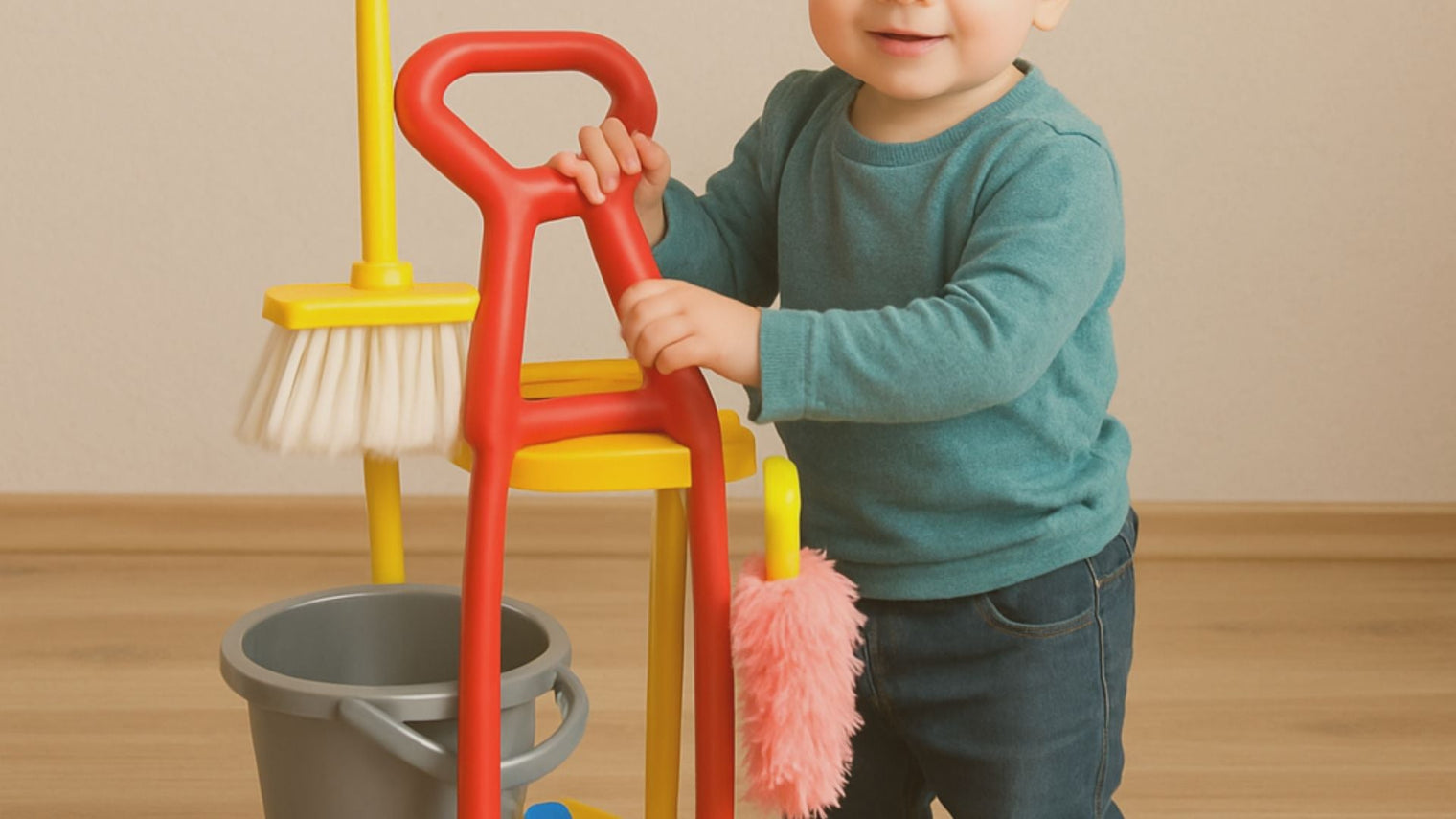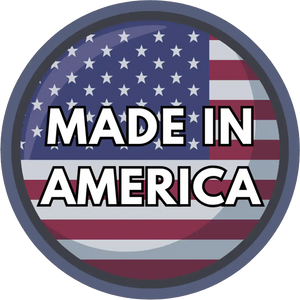Raising independent, confident children often comes down to one thing: giving them the right tools at the right time. One of the simplest, most practical ways to encourage responsibility and independence at home is by setting up a Montessori cleaning cart for toddlers.
At Dannico Woodworks, we believe children flourish when they are given opportunities to take part in everyday life.
With a thoughtfully designed cleaning cart, little ones not only learn valuable life skills but also build confidence knowing they can contribute to their home environment.
In this guide, we’ll walk you through why a Montessori cleaning cart is such a powerful tool for young children, what you’ll need to set one up, and how to introduce it to your toddler in a way that feels exciting and natural.
Why a Montessori Cleaning Cart?
Montessori education emphasizes hands-on learning and real-world experiences. A cleaning cart designed specifically for toddlers aligns perfectly with these principles. Here are a few reasons why a Montessori cleaning cart is beneficial:
- Promotes Independence: It encourages children to take initiative and complete tasks on their own.
- Enhances Motor Skills: Using cleaning tools helps in developing fine and gross motor skills.
- Builds Confidence: Successfully completing chores gives toddlers a sense of accomplishment and boosts self-esteem.
- Teaches Responsibility: It instills a sense of duty and care for their environment.
Selecting the Right Cleaning Tools
Choosing the appropriate cleaning tools is critical to the success of your Montessori cleaning cart. Here's what you should consider:
Size and Weight
The tools should be proportionate to your toddler's size. Opt for lightweight options that are easy for small hands to maneuver.
Safety
Ensure that all tools are safe for children. Avoid sharp edges and materials that could break easily.
Variety
Include a variety of tools to cover different cleaning tasks. A broom, dustpan, spray bottle, and a small duster are excellent starting points.
 Natural Materials
Natural Materials
Where possible, choose tools made from natural materials. Wooden handles and soft bristles are preferable to plastic, as they are more durable and environmentally friendly.
Organizing the Cleaning Cart
Once you have the tools, it's time to organize the cleaning cart. Here are some steps to help you get started:
Choosing the Cart
Select a cart with multiple shelves or compartments to keep the tools organized. The cart should be sturdy, with wheels for easy movement.
Layout
Arrange the tools on the cart logically. Place frequently used items within easy reach, and group similar items together.
Labeling
Consider labeling each section of the cart with images or symbols that represent the items stored there. This helps toddlers learn to organize and put things back in their rightful place.
Accessibility
Ensure that the cart is accessible and easy to move. Your toddler should be able to reach all the tools without assistance.
Teaching Toddlers to Use the Cleaning Cart
Introducing the cleaning cart to your toddler requires patience and guidance. Here’s how you can do it:
Demonstration
Start by demonstrating how to use each tool. Show them how to sweep, dust, and spray safely and effectively.
Practice
Allow your toddler to practice using the tools. Encourage them to clean up small spills or dust surfaces within their reach.
Encourage Autonomy
Give them the freedom to choose which task they would like to perform. This choice fosters decision-making skills.
Positive Reinforcement
Offer praise and encouragement for their efforts, even if the results aren't perfect. Positive reinforcement builds confidence and motivation.
Safety Considerations
While promoting independence is important, safety should always come first. Here are some safety tips to keep in mind:
- Non-toxic Cleaning Supplies: Use non-toxic, child-safe cleaning solutions or simply water for cleaning.
- Supervision: Always supervise your toddler during cleaning activities to prevent accidents.
- Secure Storage: Ensure that any cleaning solutions are securely stored out of reach when not in use.
Encouraging a Cleaning Routine
To make cleaning a regular activity, incorporate it into your toddler’s daily routine. Here are some ideas:
Daily Chores
Assign small daily chores that your toddler can handle, such as wiping a table or dusting a shelf.
Weekly Deep Clean
Set aside a day each week for a more comprehensive cleaning session. Involve your toddler in tasks like organizing their toys or tidying up their room.
Make It Fun
Turn cleaning into a fun activity by playing music or creating a game around it. This approach makes chores enjoyable and less of a burden.
FAQs
At what age is it best to introduce a cleaning cart?
Most toddlers are ready between 18 months and 3 years. Start small and adjust the tools as your child grows.
What if my toddler doesn’t use the cart?
That’s normal. Children cycle through interests. Keep the cart available, model its use, and reintroduce it later.
How often should I update the supplies?
Replace clothes weekly and check tools for wear. As your child grows, swap smaller tools for slightly larger ones.
Can older siblings use the cart too?
Absolutely. Adjust the tools so that both younger and older kids can participate.
Do Montessori cleaning carts work in small homes?
Yes. If space is limited, consider a single low shelf or basket instead of a wheeled cart.
Why Dannico Woodworks Cleaning Solutions Stand Out
At Dannico Woodworks, our passion is designing furniture that helps children grow independently and confidently.
Our pieces are built with careful attention to safety, durability, and child-centered design—making them perfect for practical life setups like cleaning carts.
By choosing thoughtfully crafted furniture, you’re not just buying tools—you’re creating an environment where your child can thrive.
Conclusion
A Montessori cleaning cart is more than just a set of tools—it’s a pathway to independence, confidence, and responsibility for your toddler.
By setting up a cart that’s functional, safe, and inviting, you’re giving your child the freedom to explore real-life skills in a joyful, age-appropriate way.
How might creating a cleaning cart change the way your toddler participates in daily life at home?


